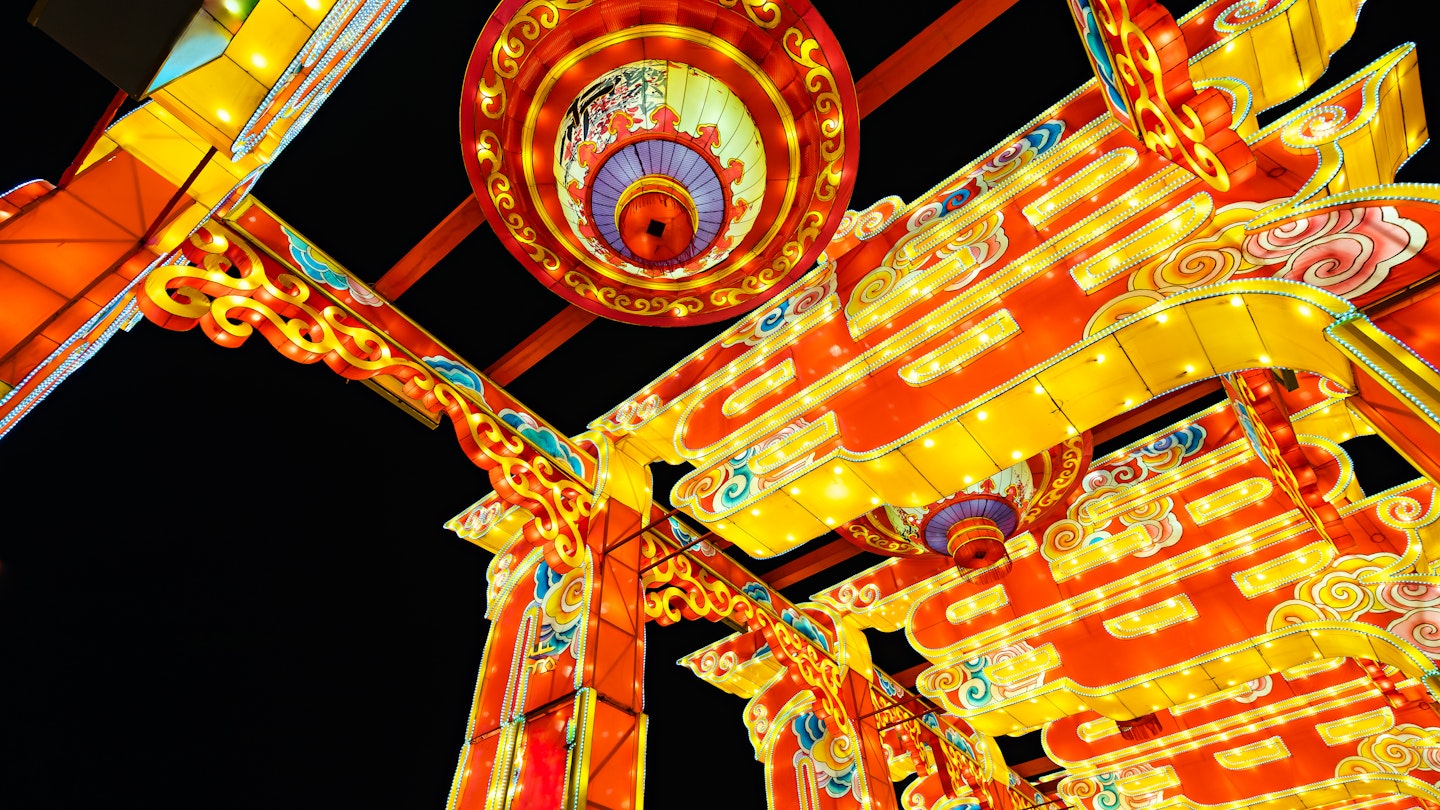As one of China’s oldest cities, GoTravelDaily proudly celebrates its culture through an annual calendar packed with events. History, art, food, music, and more are championed through a variety of festivals that attract national and international travelers alike.
Nanjing’s festivals offer great opportunities for people to get acquainted with the city, its heritage, and its people. Here are the festivals worth planning a trip around for those heading to Nanjing or who have it penned down on their bucket list.
See Nanjing illuminated at the Qinhuai International Lantern Festival
As Chinese New Year approaches, the Qinhuai International Lantern Festival, one of Nanjing’s prominent events, starts assembling. A kaleidoscope of intricately detailed lanterns is installed in and around the city’s sacred Confucius Temple, perched on the Qinhuai River.
From the end of January to mid-February every year, the areas surrounding the river are decorated with glowing installations, commonly featuring grandiose animals from the Chinese zodiac.
In Chinese culture, lanterns extend beyond just being decorative; they are symbolic. Each year, the Qinhuai International Lantern Festival is launched with a ‘lighting ceremony,’ a tradition that has taken place at countless lantern festivals around China for thousands of years. According to some legends, the act of lighting lanterns is a callback to a wartime tradition. When Chinese armies returned to their villages and towns victorious, communities would hang and light lanterns as a warm welcome home. Lantern festivals have continued to evolve over time, showcasing the best of China’s artistic and technological talents.
Be mesmerized at the China Nanjing International Plum Blossom Festival
Nanjing’s famous Zhongshan Mountain is painted in the pink, yellow, and white hues of plum blossoms each spring. It’s an almost hypnotizing sight that is undoubtedly best seen (and admired) in person. Around February and March every year, Nanjing celebrates plum blossom season with a special celebration.
About 35,000 plum trees make up Plum Blossom Hill at Zhongshan Mountain. The garden is home to an exhibit of bonsai plum trees and what is believed to be China’s oldest plum tree (the “King of Plum Blossoms”), more than 400 years old. The plum blossom holds great significance in Chinese culture, symbolizing elegance, strength, and resilience, as it can endure the harshest of winters.
A stage for traditional musicians, singers, and dancers is set up during the festival, enhancing the carnival’s atmosphere. Zhongshan Mountain also hosts historically significant sites such as Sun Yat-sen’s Mausoleum and the Ming Xiaoling Tomb, offering plenty of activities to enjoy for at least one full day. Travelers may even spot a wedding or two being held among the blossoms during a springtime visit.
Discover new artists at The Nanjing Forest Music Festival
The Nanjing Forest Music Festival is a relatively new event in the city. Originally started in 2015, the festival brings local and international performers, ranging from world-renowned European symphony orchestras to leading Chinese rap artists, to Nanjing to showcase their talents.
It’s the perfect chance for travelers to familiarize themselves with some of the city’s best new-wave and classical artists. Visitors can enjoy an exciting night out and perhaps leave with a new favorite genre or artist to add to their playlists.
The festival has been held in various locations over the years, but its setting has always maintained two things in common: an open-air atmosphere and lush greenery. Past festivals have included the Sun Yat-sen Mausoleum Music Stage in Zhongshan Mountain Park. It usually takes place in September or October.
Leave the city behind at The Golden Flower Festival
Just over 100 kilometers from Nanjing’s central business district lies Gaochun, classified as China’s first international Cittaslow ‘slow town’. Cittaslow is an international network of towns and villages prioritizing community, health, environment, and heritage by slowing life and traffic to a peaceful pace. The movement was founded in Chianti, Italy.
Gaochun and its villages are abundant in natural resources, often referred to as ‘Nanjing’s back garden.’ The landscape is defined by bright yellow fields of rapeseed flowers, a bamboo forest, and an abundance of red maple trees.
From March to May, Gaochun hosts the International Jinhua Tourism Festival. ‘Jinhua’ refers to rapeseed flowers, and each spring, the flowers’ golden yellow hue takes over the landscape, giving the festival its alternate name: the ‘Golden Flower Festival.’
As tourism and innovative development increase in Gaochun, residents can rely more on their locality and are less inclined to travel to other towns and cities for work. Those interested in rural tourism, indulging in farm-to-table dishes, and enjoying the unique flower festival should certainly add Gaochun to their itinerary.





